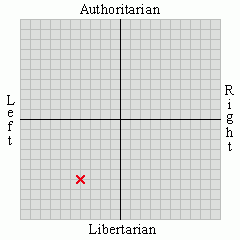The T-33
The T-33 was developed from the P-80. It became apparent, early on, that giving piston aircraft pilots a cockpit and procedures brief and then turning them loose in a single-seat jet was a really bad idea. The T-33 was training American pilots into the 1960s and then served in various utility roles for another thirty years. It's served as a recon airplane, an attack airplane and, on occasion, reverted to its roots as a fighter.
Reportedly, the military versions had the ability to blow off the tip tanks if one refused to feed, as the imbalance that resulted was not survivable. The FAA took a dim view of that and demanded that civilian-operated T-33s disable that feature. The T-33's fuel system is supposed to shut off fuel from the other tank if one won't feed, but it's a good idea to watch out for it not working.
That’s Just Strait Up Wrong
37 minutes ago











7 comments:
I remember that sound. They had those at Tyndall for years after most everyone else in the AF got rid of them, and we lived right across the bay from the runway.
Its parent the P-80 was almost a WW2 fighter: a handful of YP models were deployed to England and Italy but were still flying shakedown missions when the war ended.
Worked a lot of them in the late '60s, early '70s, especially around the end of the month. It was a standing joke in the last week of the month at the number of T-Birds that were out on round robin flights. We surmised they were all flown by field grade or flag grade officers, normally desk bound, but who wanted to keep their flight pay status.
T-Birds were our first stealth airplane, as, without any technology at all, they were notorious for poor skin paint (primary radar). If one of them lost their transponder, you had your work cut out for you tracking them. Another notorious annoyance was they were in the Slowtation class of airspeed. DC-9s and 73s would pass them up with ease. A Herc, downhill, on a good day, could give them a go.
Fun times.
LRod
ZJX, ORD, ZAU retired
Are they as lame as the Czeck Aero L-29 Delfín (350 knots max)?
That was the standard eastern-bloc trainer for many a long year.
I don't know that I'd call either of them lame, Ole. The T-33 was a needed transitional trainer as Miss Fit says in her original post. Its predecessor was basically our first jet fighter, and in the 1940s. How awesome could it have been compared to anything thirty, or even ten years newer?
And real trainers are rarely just two seat versions of a fighter (there are plenty of those, but they're not primary trainers). Their purpose is to get pilots into an aircraft that's more systems oriented (instead of strictly stick-and-rudder vehicles, which, nevertheless, have their place). That wasn't as much of a goal with the T-Bird, but it sure was with the L29.
One can't measure how un-lame an aircraft is without considering its role. 350 Kts is a lot of airplane for someone with 50-100 hours (or even more). If its design wasn't to hang with Gen 4 or 5 fighters (and, as a trainer, it shouldn't have been), then the airspeed can be irrelevant. It's purpose is to learn the dynamics of a jet engine, learn the limits of a greatly expanded envelope, understand the differences in wing loading, advance IFR operations in a far more complex environment, and while neither the T-Bird nor the L29 are swept wing aircraft, there are dynamics of their airframe that are different from piston powered aircraft.
My son's father-in-law made a very cogent observation once that gave me considerable pause. He had been an Eastern captain, and had more than a dozen aircraft on his type ratings certificate: B-66, F-102, C-141, B727, L1011, B757/767, and others. I asked him once about a (very senior--probably from the DC3 days) contemporary, who I'd been given to understand had over-rotated an L1011 at SJU, rapidly accelerating his retirement. Son's f-i-l observed that he most likely had never fully grasped the concept of flying swept wing aircraft. Spoke volumes to me.
LRod
ZJX, ORD, ZAU retired
In my previous reply, I referenced my son's father in law. It should have been my son-in-law's father. Doesn't change the narrative, but I like to be accurate.
LRod
ZJX, ORD, ZAU retired
"... giving piston aircraft pilots a cockpit and procedures brief and then turning them loose in a single-seat jet was a really bad idea."
Might you be thinking of Richard I Bong, in making this comment?
Post a Comment